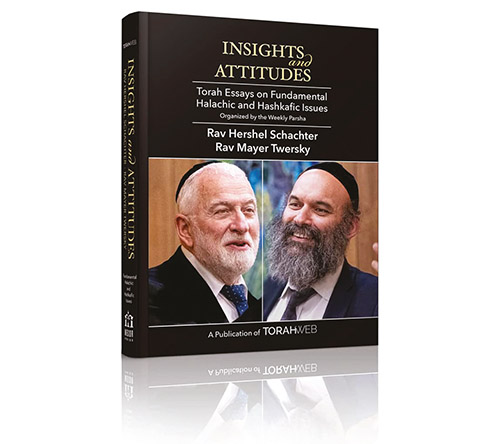
Editor’s note: This series is reprinted with permission from “Insights & Attitudes: Torah Essays on Fundamental Halachic and Hashkafic Issues,” a publication of TorahWeb.org. The book contains multiple articles, organized by parsha, by Rabbi Hershel Schachter and Rabbi Mayer Twersky.
The requirement to build a Beis Hamikdash is counted among the 613 mitzvos, and applies in every generation whenever possible. Yechezkel HaNavi (11:16) told Bnei Yisrael that they would be exiled to Bavel, and even though they would not have the real Beis Hamikdash, they would have a “mikdash me’at – miniature Beis Hamikdash.” The Gemara (Megilla 29b) understands this to be a reference to all shuls and yeshivos in Bavel and all over the world. The Chayei Adam (1:17:6, quoting R. Eliezer of Metz in Sefer Yerei’im 396) says that kiddushas beis hakeneses and Beis Hamikdash are of biblical origin. Rabbi Dovid of Novardok (Galya Massechta, Derush 23b) assumes that according to the Ramban, who writes (Bamidbar 7:13) that there is a biblical mitzva to celebrate upon the completion of the building of the Beis HaMikdash, it would also constitute a biblical mitzva to celebrate a chanukas habayis upon the inauguration of a new shul or a new beis hamidrash.
Rav Soloveitchik (Shiurim Lezeicher Avi Mori, vol. 2, pp. 78-83) explained that one of the main purposes of the Beis Hamikdash is for us to have a location where we can get together with Hashem. The Beis Hamikdash is beis Hashem, Hashem’s home, and we go there to “visit” Him. Shuls and yeshivos, however, are our home, and Hashem “comes” to them in order to “visit” us. When one goes to visit the king in his palace, one must be much more respectful than when the king is visiting in one’s home. This is why the Chumash speaks of mora haMikdash (extreme respect for the Beis Hamikdash) and the Gemara and Shulchan Aruch speak of kevod beis hakeneses, a slightly lower level of respect.
The Shulchan Aruch (Orach Chaim 529:1), quoting the Talmud Yerushalmi, says that bigdei Yom Tov must be fancier than bigdei Shabbos. Rav Soloveitchik (ibid.) explained that on the shalosh regalim we have an obligation to be oleh laregel, to visit the Ribbono Shel Olam in His palace. On Shabbos, on the other hand, the Shechina comes to visit us. When we recite kabbalas Shabbos, we are not only greeting the Shabbos queen, but also the Shechina who is visiting us. Consequently, the minhag in Europe used to be that everyone stood for Lecha Dodi; it was treated as a davar shebikdusha, since the kahal was greeting the Shechina who was coming to visit us on Shabbos. Therefore, the bigdei Yom Tov should be more elegant than bigdei Shabbos, because on the regalim we are visiting the King in His palace, as opposed to Shabbos when the King is coming to visit us.
Rabbi Hershel Schachter joined the faculty of Yeshiva University’s Rabbi Isaac Elchanan Theological Seminary in 1967, at the age of 26, the youngest Rosh Yeshiva at RIETS. Since 1971, Rabbi Schachter has been Rosh Kollel in RIETS’ Marcos and Adina Katz Kollel (Institute for Advanced Research in Rabbinics) and also holds the institution’s Nathan and Vivian Fink Distinguished Professorial Chair in Talmud. In addition to his teaching duties, Rabbi Schachter lectures, writes, and serves as a world renowned decisor of Jewish Law.










